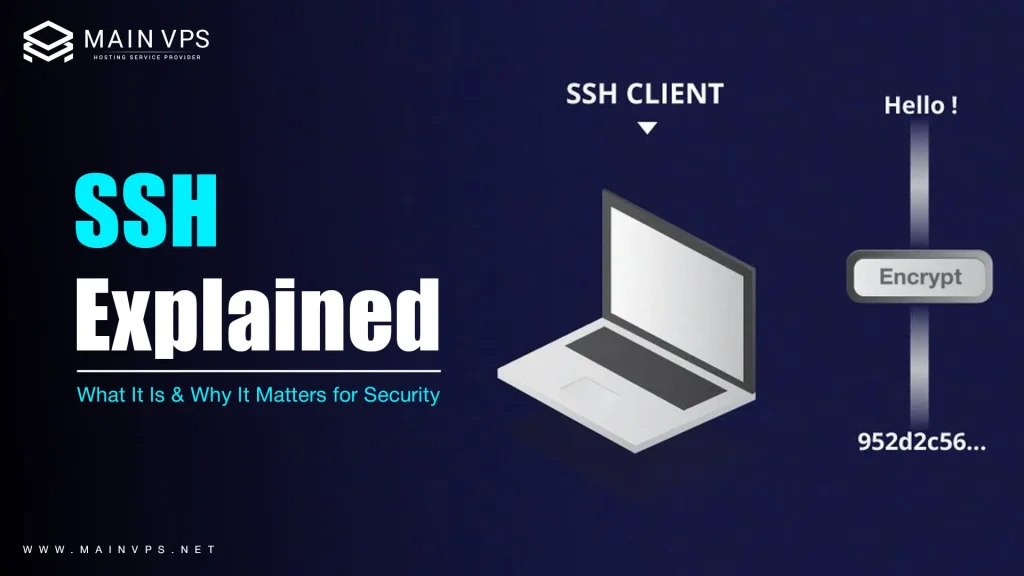
In the current era where companies operate on a remote basis and the cloud is of utmost importance, being able to access servers securely from any location is critical. This is where SSH (Secure Shell) comes into play. Whether you are managing Linux servers as a system administrator, coding as a software developer, or tinkering with devices such as Raspberry Pi, SSH is an indispensable tool.
In the following sections, we will guide you step by step on what SSH is, its clients, and servers, as well as using them both effectively and safely.
What is SSH?
SSH (Secure Shell) is a protocol used to securely connect to remote machines over a network. It encrypts all communication, ensuring that your commands, data, and login credentials are protected from prying eyes.
Think of SSH as a secure tunnel between your computer and another. You can use it to log into remote systems, execute commands, transfer files, and even tunnel traffic from other services.
What Is an SSH Client?
The SSH client is the software on your local machine that initiates the connection to the remote server.
Common SSH Clients:
- Linux/macOS: Use the built-in
sshcommand in the terminal. - Windows: Use tools like PuTTY, MobaXterm, or the Windows Terminal (which now supports OpenSSH natively).
- Mobile: Apps like Termius for iOS/Android let you SSH from your phone.
Basic Usage Example:
bash
ssh username@your-server-ip
This connects you to the server using your credentials.
What Is an SSH Server?
An SSH server is the remote machine you’re connecting to. It runs a service (commonly sshd) that listens for incoming SSH connections.
Installing an SSH Server on Debian/Ubuntu:
bash
sudo apt update
sudo apt install openssh-server
Starting and Enabling SSH:
bash
sudo systemctl enable ssh
sudo systemctl start ssh
Once the server is running, any SSH client with credentials can connect to it securely.
How SSH Works (In Simple Terms)
- Handshake: The client connects to the server and checks its identity via public key cryptography.
- Authentication: You log in using a password or SSH key.
- Encryption: A secure session is established, encrypting all data going back and forth.
- Session: Now you can run commands, copy files, or use port forwarding securely.
Passwords vs SSH Keys
You can log in via:
- Passwords (easy but less secure)
- SSH Keys (highly secure, especially with passphrase protection)
Generate an SSH Key:
bash
ssh-keygen -t rsa -b 4096
Copy it to your server:
bash
ssh-copy-id username@your-server-ip
Once set up, you can log in without typing a password—faster and safer!
Best Practices for SSH Security
- Use SSH keys instead of passwords
- Disable root login via SSH
- Change the default port (22) to something like 2222
- Keep your SSH server updated
- Limit access via firewall or fail2ban
Advanced Uses of SSH
- Secure file transfers with scp or sftp
- SSH Tunneling to access web interfaces or databases securely
- Remote support sessions
- GUI forwarding via X11 (for running desktop apps remotely)
FAQs About SSH
Q1: What does SSH stand for?
A: SSH stands for Secure Shell. It’s a network protocol for encrypted communication between computers.
Q2: Is SSH only for Linux?
A: No. SSH works across platforms. Linux, macOS, and Windows all support SSH, either natively or via third-party apps.
Q3: Can I transfer files using SSH?
A: Yes. Use scp or sftp for secure file transfers over SSH.
bash
scp file.txt user@host:/path/
Q4: Is it safe to keep SSH enabled on my server?
A: Yes, but secure it properly. Use keys, disable root login, and change the default port to reduce exposure.
Q5: What port does SSH use by default?
A: Port 22. You can change this in your server’s sshd_config file to increase security.
Q6: What happens if I lose my SSH key?
A: If you lose your private key, you won’t be able to connect unless you have alternate access (e.g., password login or console). Always back up your SSH keys securely.
Q7: Can SSH be hacked?
A: Like any service, SSH can be targeted—but if you follow best practices (key-based auth, firewall, etc.), it is extremely secure.
Final Thoughts
Beyond being merely a command line tool, SSH serves as a life-line for developers, sysadmins, and remote teams. Managing servers becomes powerful and secure.
From deploying web-apps, problem troubleshooting, to backing up databases, SSH operates seamlessly and securely in the background.





